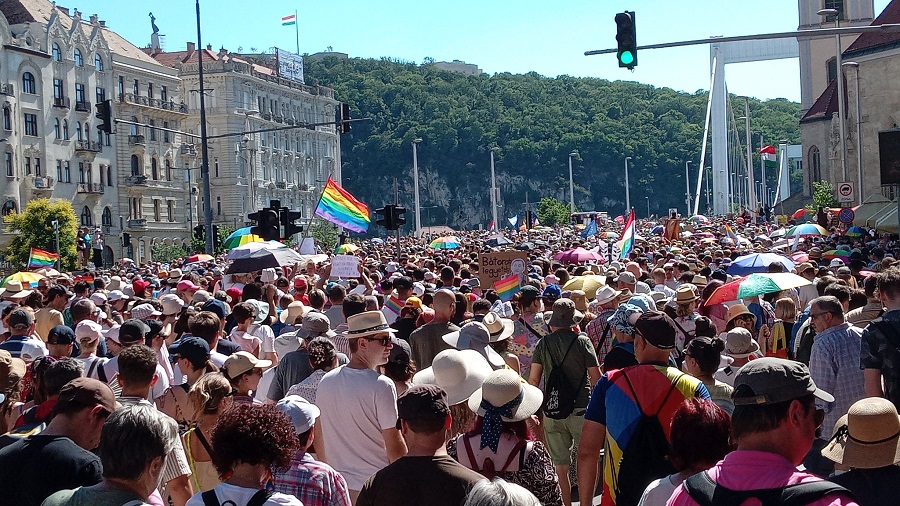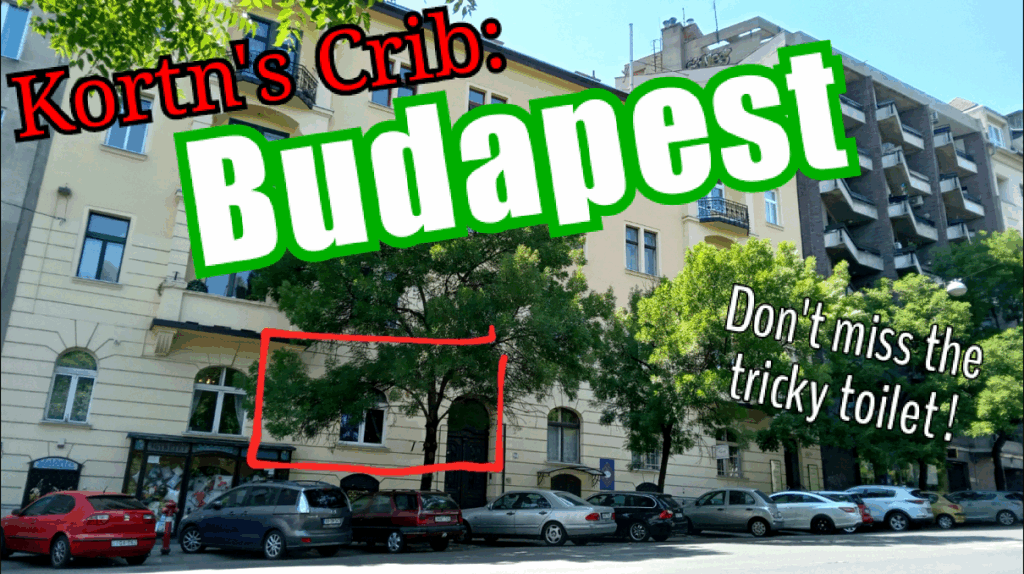We haven’t been to Hungary yet, and it’s as good a place as any in Europe to spend part of the summer. It’s also a good place to witness the historic right-wing rise at yet another place on Earth as we continue our budget slow travel in early retirement for as long as we can.
We watch tourists amble around magnificent structures like the famed Parliament building, St. Stephen’s Basilica, Matthias Church. We walk for miles: Liberty Square, the Castle District, the Jewish Quarter, the notorious District VIII. We picnic on Liberty Bridge – one of several destroyed in World War II. In fact, 80 percent of Budapest had to be rebuilt or repaired after the Nazis lost.
At Liberty Square we see ‘The Memorial for Victims of the German Occupation’ and its counter-memorial that calls the installation a lie. Jewish groups and Hungarian historians say the Victims memorial means to absolve citizens of any blame for the Holocaust. Archangel Gabriel holds the Hungarian symbol of sovereignty, as a giant eagle that represents Germany swoops down to grab that sovereignty. Critics say the imagery whitewashes responsibility for the deaths of half a million Hungarian Jews because it implies all of Hungary was a victim to German aggression.
However, sane people know the basic facts: the Hungarian government sided with the Nazis for most of the war, Hungarian citizens failed to stop deportations of Jews to Nazi extermination camps, and Hungary’s own fascist political party Arrow Cross worked with the Nazis.
I read the Jews’ responses on the makeshift counter-memorial. Photocopied family pictures and life stories of genocide victims are hung on barbed wire before the towering metal memorial. One post says Nobel Peace Prize laureate Elie Wiesel returned a Hungarian award in protest over the monument. His parents and sister died. Worn, dirty suitcases and holed leather shoes are filled with stones to honor the murder victims, because flowers die.

Large protests often pop up at Liberty Square against the country’s current leadership over a variety of other issues. Urban-dwellers call out Hungary’s slide to authoritarianism under Viktor Orbán, a career politician friendly to Russia’s Vladmir Putin and openly admired by Donald J. Trump. Orban is accused of corruption, erosion of free speech, and he refuses to arrest Israeli strongman Benjamin Netanyahu and Putin during any visit — despite International Criminal Court warrants for Bibi’s genocide against Gaza and Putin’s border war against a sovereign nation state.
We find more shoes with rocks on the Danube riverbank. It’s an art installation. Metal replicas that honor the Jews killed by Arrow Cross Hungarians. The killers had the Jews remove their shoes, then used the laces to tie small groups together at the ankles. They shot a few Jews, and they were the lucky ones, as the groups fell into the river and eventually drowned. We shudder at the madness, we feel depressed in the sunlight as we look beyond the shoes and into the swirling water.

We learned Budapest’s misery didn’t end with the Nazis. The Soviet communists moved in and the oppressive rule sometimes turned deadly. Over those long decades the Hungarians grew bitter against communist occupation, and that is still evident today. There are a high number of security cameras — and Russian guards (!) who patrol a section of the huge Fiumei Road Cemetery. This is where Soviet soldiers are laid to rest — comrades who died in 20th century violence. Without these patrols, some Hungarians would desecrate the Russian graves because revenge is an itch that Europe hasn’t ever been able to ignore.
The famous cemetery is part of the notorious District VIII. It’s notorious because it’s where prostitutes used to work before online ‘dating’, where drug addicts use ‘crock’ in abandoned factories today, and where poor Hungarians, Gypsies, and immigrants live in buildings ready for condemnation at any minute. This is the so-called ‘seedy’ part of town, where tourists typically don’t venture, but where we go on purpose. I’m amazed at crumbing staircases, looted metal mailboxes that leave gaping holes in vestibules. District 8 has the lowest rents in town.

But we see something else that grabs our attention here: another Jewish memorial site and museum that has never opened, despite a hefty price tag.
The House of Fates is on an old train station site. It sits locked up behind gates and chains. The old train cars used to transport Jews to death camps are stacked up and tower over us. Inside, the exhibits claim only a tiny fraction of the ruling class was responsible for the genocide – the mass murder that is the single most consequential event to still poison the world today. Jewish groups say The House of Fates is another attempt by Orban (and others) to deflect blame for the extermination of half a million Hungarian Jews. One group says the ‘memorial’ teaches a lie: that Hungarian citizens “were essentially blameless for what is inflicted upon their Jewish neighbors.”

Collective Jewish rage keeps the House of Fates closed, which will likely be demolished. That rage, that revenge itch, plays out today in Gaza by madmen who don’t see the irony of Palestinians’ starvation and dehumanization.
Meanwhile, we world citizens, well, we don’t do much, do we? Collective laziness has us look the other way because we non-Palestinians are not in immediate danger.
I decide Europe is depressing, and, like my homeland, hasn’t accepted unity in our humanity. I think Europe is going through another Dark Ages, just like the USA. Our next stops are Slovakia and Poland – two more countries with increasing collective self-righteousness. Those countries will be new for us, and they are as good as any on our budget slow travel world tour in early retirement.
But before we leave Hungary – something gives me a bit of hope. Half a million people march to support LGBTQ+ rights in an annual Pride parade. Orban tried to cancel it and threatened to use facial recognition to fine participants. Instead, so many people come out to support the minority that there will be no fines.

My hope for a Global Enlightened Time is limited, however, because protests back home are not nearly as impressive as what I see in as a traveler in Budapest.
Thanks for reading, “A traveler in Budapest.”
About Ellen

Ellen’s sobriety date is April 13, 2010. She left the news business in 2015 to travel the world on a budget with spouse Theo in early retirement.
She was diagnosed with breast cancer in 2018 while traveling and had a double mastectomy without reconstruction in Croatia. She recovered, and kept traveling the world as a ‘flattie‘.
Recent posts:

Kortn’s Crib: Video tour of Airbnb flat in Budapest, Hungary
Theo





